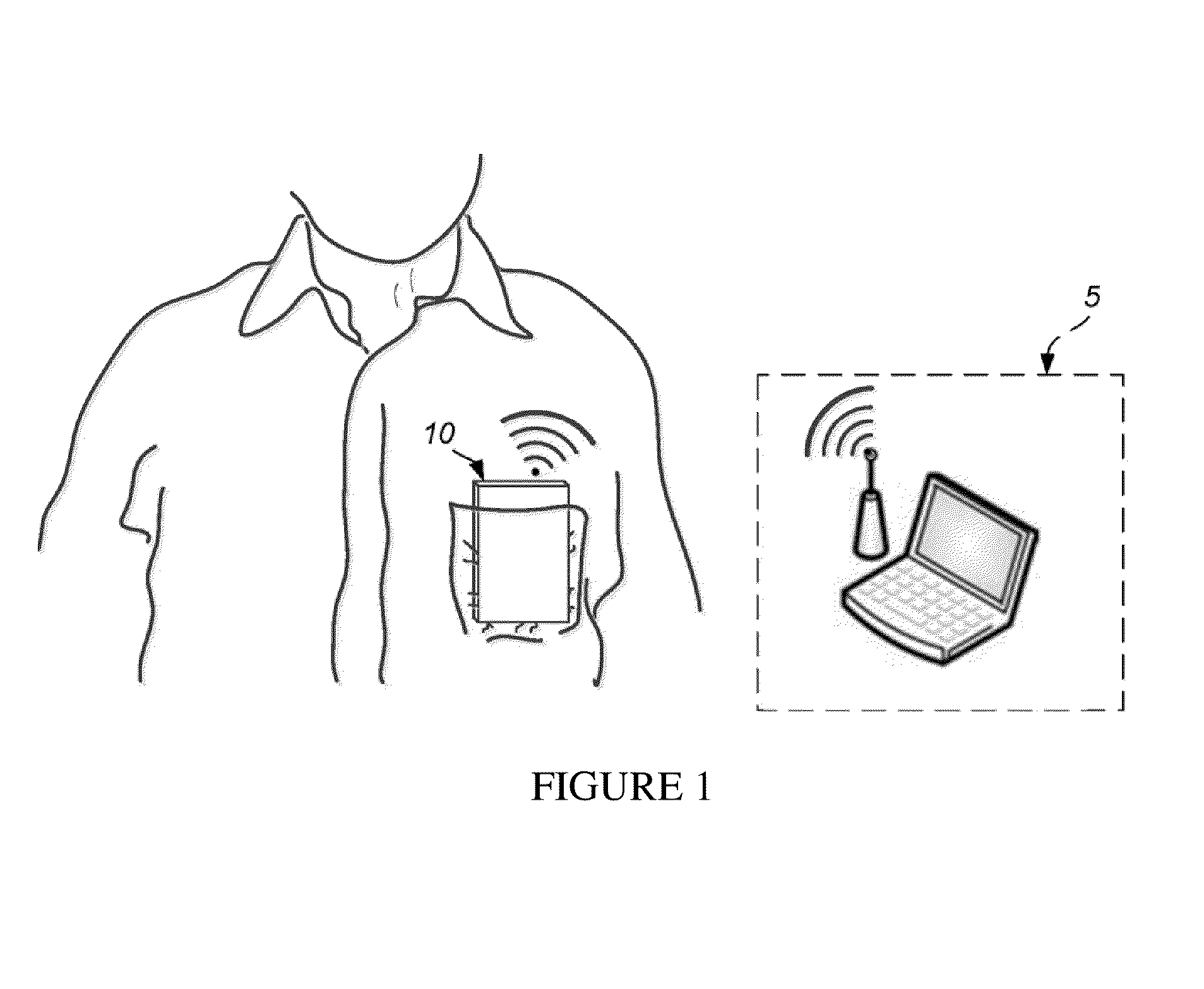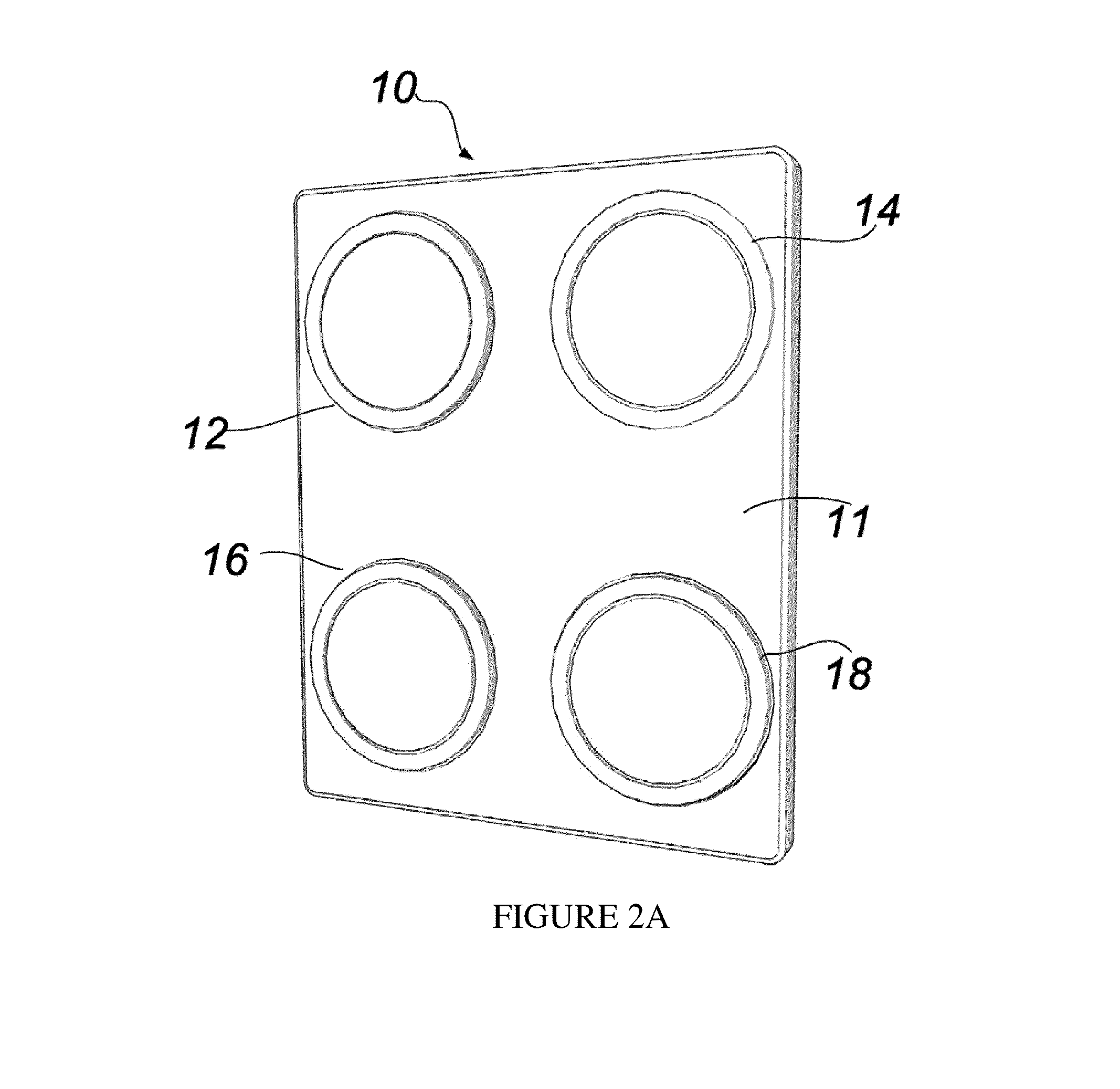Non-contact electrocardiogram system
a non-contact, electrocardiogram technology, applied in the field of electrocardiogram monitoring, can solve the problems of unworkable long-term personal health monitoring with traditional adhesive electrodes, unsuitable wires and adhesives, and considerable inconvenience and discomfort for users, so as to correct the gain dependence of the charge amplifier, and achieve the effect of robust and convenient heart rate monitor
- Summary
- Abstract
- Description
- Claims
- Application Information
AI Technical Summary
Benefits of technology
Problems solved by technology
Method used
Image
Examples
Embodiment Construction
[0026]Referring now to the drawings, wherein like reference numerals refer to like parts throughout, there is seen in FIG. 1 a compact, credit card-sized sensor system 10 for measuring cardiac signals. The measured data can be wirelessly transmitted from system 10 to a user base station 5 for recording and analysis. System 10 includes four equally spaced and equal area cardiac sensors 12, 14, 16, and 18 as shown in FIG. 2A. The plane 11 is electrically shielded and grounded. System 10 further includes a front-end analog processing unit 33 labeled as ECG ASIC (Application Specific Integrated Circuit), a microcontroller 26, memory unit 35, radio communication circuit 28, antenna 29, power conditioning and power source unit and, optionally, an alarm (nurse call) button 22, and alarm speaker 24, as detailed in FIG. 2B.
[0027]An exemplary signal processing system 23 for system 10 is illustrated in FIG. 3. A sensor processor 20 is responsible for processing the signals from each of four ca...
PUM
 Login to View More
Login to View More Abstract
Description
Claims
Application Information
 Login to View More
Login to View More - R&D
- Intellectual Property
- Life Sciences
- Materials
- Tech Scout
- Unparalleled Data Quality
- Higher Quality Content
- 60% Fewer Hallucinations
Browse by: Latest US Patents, China's latest patents, Technical Efficacy Thesaurus, Application Domain, Technology Topic, Popular Technical Reports.
© 2025 PatSnap. All rights reserved.Legal|Privacy policy|Modern Slavery Act Transparency Statement|Sitemap|About US| Contact US: help@patsnap.com



